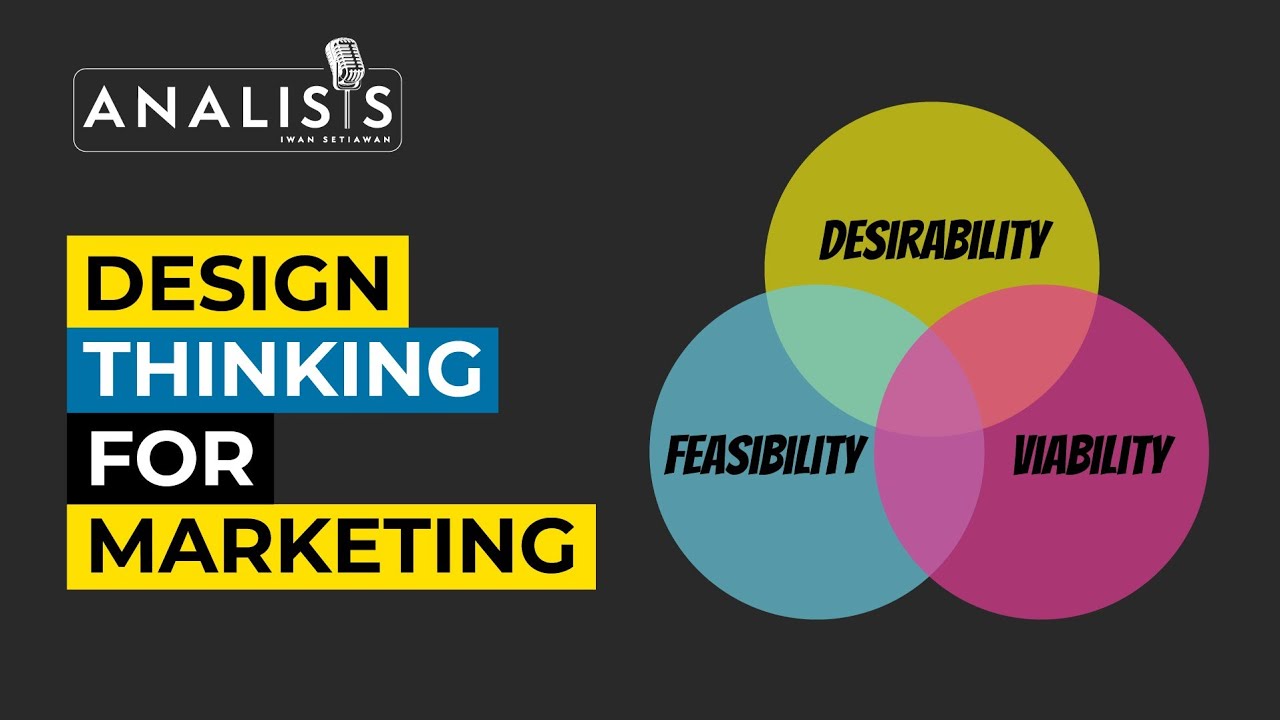What Is Design Thinking? An Overview
Summary
TLDRIn this video, Jonathan from AJ & Smart introduces the concept of design thinking, emphasizing its relevance and widespread use in innovative companies. He outlines design thinking as a human-centered, creative problem-solving approach with five core steps: empathize, define, ideate, prototype, and test. The process is flexible, allowing for various exercises to fit the needs of each project, and Jonathan encourages viewers to explore further resources for a deeper understanding of design thinking and its application in workshops and product development.
Takeaways
- 📚 Design Thinking is a philosophy and set of tools for creative problem-solving with a human-centered approach.
- 🛠 It is widely used across innovative companies and is essential for designers, product managers, and anyone interested in innovation.
- 🌟 The process is not a rigid recipe but a flexible framework that can be adapted to different situations and needs.
- 🤔 The five main steps of Design Thinking are Empathize, Define, Ideate, Prototype, and Test, forming a cycle that can be repeated based on new insights.
- 🧑🤝🧑 Empathize involves understanding the people for whom you are designing, often through interviews and creating personas.
- 🔍 The Define step translates the empathy insights into a clear problem statement and user needs.
- 💡 Ideate is where solutions are brainstormed, often in a workshop setting with lots of creative ideas generation.
- 🛍️ Prototype involves creating simple, testable models of the ideas to validate them with real users.
- 📊 The Test phase is about gathering real-time feedback from users to understand how well the prototypes meet their needs.
- 🔄 The Design Thinking cycle is iterative, with insights from testing feeding back into the Define and Ideate steps for refinement.
- 🔑 Design Thinking emphasizes starting from the user's perspective rather than being driven by existing technologies or products.
Q & A
What is the main topic of the video?
-The main topic of the video is an overview of design thinking and its relevance in 2020.
Why is design thinking important for various roles in a company?
-Design thinking is important because it helps in solving problems creatively and is used by innovative companies worldwide, making it essential for designers, product managers, and anyone interested in innovation.
What does the speaker suggest about the prevalence of design thinking?
-The speaker suggests that design thinking has been prevalent for the last 20 years and is not going away, indicating its widespread use and importance.
What is the core philosophy of design thinking?
-The core philosophy of design thinking is a human-centered approach to creative problem-solving.
How does design thinking differ from other problem-solving processes?
-Design thinking differs by focusing on the human-centered side of problem-solving, emphasizing empathy and understanding the needs of the people for whom the product or service is being designed.
What are the five main steps of the design thinking process?
-The five main steps are empathize, define, ideate, prototype, and test.
What does the 'empathize' step involve?
-The 'empathize' step involves understanding the people for whom you are designing, typically through gathering information, conducting interviews, and creating personas.
What is the purpose of the 'define' step in design thinking?
-The 'define' step is about taking the insights and information gathered during the 'empathize' step and defining the user's needs, problems, and challenges.
Can you explain the 'ideate' step in the design thinking process?
-The 'ideate' step is where solutions and ideas are generated, often involving brainstorming sessions to match potential solutions with the insights from previous steps.
What is the role of 'prototype' in the design thinking process?
-The 'prototype' step involves turning selected ideas into simple, testable prototypes that can be tested with real users to gather feedback.
How does the 'test' step in design thinking work?
-The 'test' step involves using the prototypes with real people to gather feedback, which then informs new insights and may lead back to the 'define' or 'ideate' steps for further refinement.
Why is the design thinking process described as flexible?
-The design thinking process is described as flexible because, while the five steps remain consistent, the specific exercises and methods used within each step can vary depending on the approach of the designer or company.
How does the speaker differentiate design thinking from a structured recipe like design sprints?
-The speaker differentiates design thinking by stating it is a philosophy and mindset with a broad map of activities, unlike design sprints which follow a more rigid, recipe-like structure.
What additional resources does the speaker mention for learning more about design thinking?
-The speaker mentions their LinkedIn profile for a week of design thinking content, their website workshopor.com for guides and resources, and their YouTube channel for new videos every week.
How can viewers suggest topics for future videos by the speaker?
-Viewers can suggest topics for future videos by leaving comments on the video, indicating what they would like to see, such as more workshops or information on design thinking and design sprints.
Outlines

Этот раздел доступен только подписчикам платных тарифов. Пожалуйста, перейдите на платный тариф для доступа.
Перейти на платный тарифMindmap

Этот раздел доступен только подписчикам платных тарифов. Пожалуйста, перейдите на платный тариф для доступа.
Перейти на платный тарифKeywords

Этот раздел доступен только подписчикам платных тарифов. Пожалуйста, перейдите на платный тариф для доступа.
Перейти на платный тарифHighlights

Этот раздел доступен только подписчикам платных тарифов. Пожалуйста, перейдите на платный тариф для доступа.
Перейти на платный тарифTranscripts

Этот раздел доступен только подписчикам платных тарифов. Пожалуйста, перейдите на платный тариф для доступа.
Перейти на платный тарифПосмотреть больше похожих видео
5.0 / 5 (0 votes)






